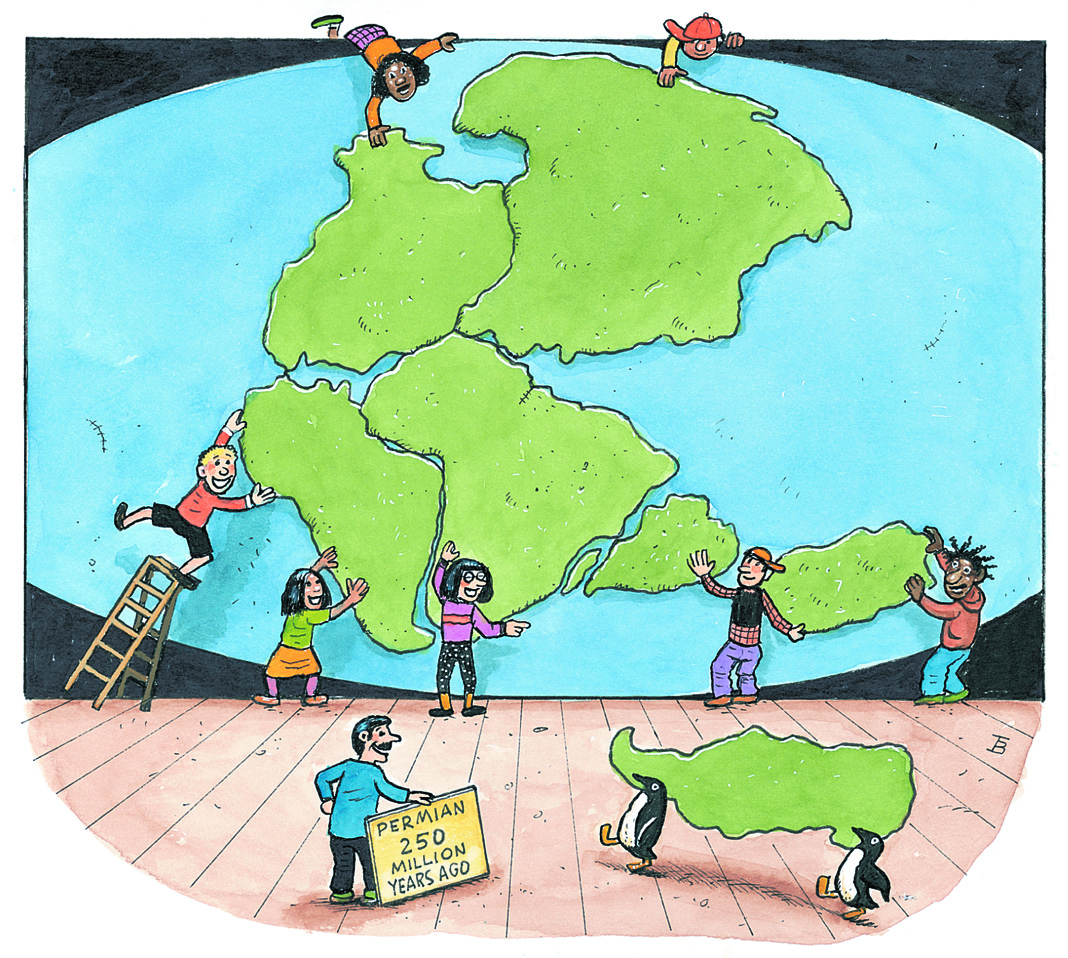
Overview
In this section you will find materials that support the implementation of EarthComm, Section 6: The Changing Geography of Your Community.
Learning Outcomes
- Analyze data on minerals, rock formations, and fossils on a map of Earth’s continents to determine their distributions.
- Use a model of Earth’s continents to explain changes in the positions of the continents from 250 million years ago.
- Use a model of Earth’s continents to predict changes in the positions of the continents 250 million years in the future.
- Evaluate the evidence for competing arguments for the movement of Earth’s continents over geologic time.
Inquiring Further
- To learn more about the history of the development of the theory of plate tectonics, visit the following web sites:
Plate Tectonics: The Rocky History of an Idea, Museum of Paleontology, University of California at Berkeley
Reviews the development of plate tectonics theory by the late, great Alfred Wegener.
Developing the Theory, USGS
Reviews the major scientific developments that spurred the formulation of the plate tectonics theory.
Harry Hammond Hess, USGS
Read about the man who developed ideas to support the concept of plate tectonics and what eventually became known as "sea floor spreading."
Our Changing Continent, USGS
Looks at the clues paleogeographers have used to determine the positions of the continents back through time. Many of these clues were used to initially validate the theory of plate tectonics.
- To learn more about NASA’s LAGEOS satellites, visit the following web site:
LAGEOS-1, -2, NASA
Describes how the LAGEOS satellites work and the LAGEOS mission objectives.
Resources
To learn more about this topic, visit the following web sites:
Development of Plate Tectonics Theory
Plate Tectonics: The Rocky History of an Idea, Museum of Paleontology, University of California at Berkeley
Reviews the development of plate tectonics theory by the late, great Alfred Wegener.
Developing the Theory, USGS
Reviews the major scientific developments that spurred the formulation of the plate tectonics theory.
Harry Hammond Hess, USGS
Read about the man who developed ideas to support the concept of plate tectonics and what eventually became known as "sea floor spreading."
Our Changing Continent, USGS
Looks at the clues paleogeographers have used to determine the positions of the continents back through time. Many of these clues were used to initially validate the theory of plate tectonics.
Geomagnetism and Paleomagnetism
Geomagnetism and Paleomagnetism, AGU
Reviews the basics of paleomagnetics and how scientists measure the magnetic field of the Earth. Also provides additional links for further exploration. Find out more about how scientists are developing models that more closely resemble Earth's magnetic field.
Paleomagnetic Analyses, USGS
Click on the links to learn about the scientific applications of paleomagnetism in rocks and the equipment used for investigation.
Geomagnetism Frequently Asked Questions, NOAA
Describes the use of geomagnetism and provides helpful links to other sites for more information.
Map of Earth's Magnetic Field Intensity, NOAA
Examine a global map showing how the strength of Earth's magnetic field varies from the equator to the poles.
